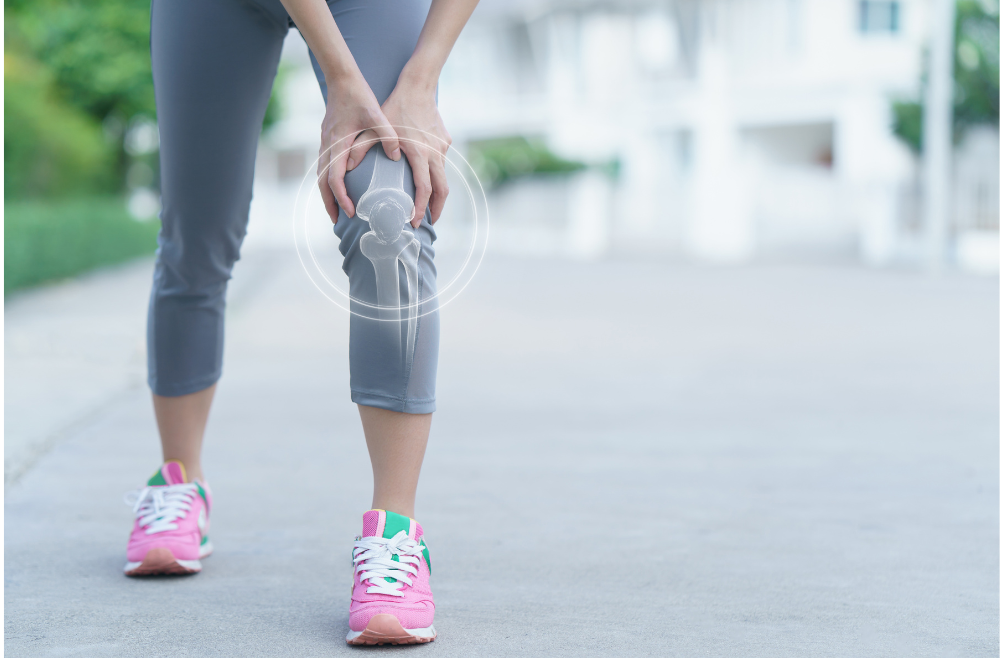Top 5 Reasons for Inner Knee Pain and How to Prevent It

Inner knee pain is more common than you might think. It can strike anyone, from casual walkers to avid hikers and cyclists.
This type of pain can turn each step into a challenge, potentially limiting your ability to enjoy the great outdoors.
However, understanding its causes is the first step toward effective prevention and relief.
In this blog, we’re going to explore the top five reasons for inner knee pain and give you practical tips to keep it at bay.
This blog is for anyone experiencing inner knee pain, especially hikers, cyclists, mountain bikers, or those who enjoy an active lifestyle.
If you’re tired of knee pain interrupting your adventures, this is for you.
Top 5 Reasons for Inner Knee Pain
Medial Meniscus Tears
The medial meniscus is a critical piece of cartilage that serves as a cushion and shock absorber between the femur (thigh bone) and the tibia (shin bone). This cushion helps in stabilizing the knee joint and allows for smooth movement. Athletes who play contact sports or engage in high-impact activities are at a higher risk of these tears.
Symptoms: The swelling usually occurs due to fluid accumulation from the tear, leading to noticeable stiffness and reduced mobility. You may also hear a popping sound at the time of the injury or experience locking sensations when trying to bend or straighten your knee.
Prevention Tips: Strengthening the muscles around the knee can help prevent medial meniscus tears. Focus on exercises that target the quadriceps and hamstrings to offer more stability and support to the knee joint. When engaging in sports, ensure proper form and technique, and use protective gear to reduce the risk of injury.
Medial Collateral Ligament (MCL) Sprains
The medial collateral ligament (MCL) is a key band of tissue that runs along the inner knee, providing stability by preventing excessive side-to-side movement. Sprains or tears in this ligament often result from sudden twisting motions, lateral blows to the knee, or abrupt changes in direction. Athletes, particularly those in contact sports like football or basketball, are at a higher risk of MCL injuries.
Symptoms: MCL sprains typically cause inner knee pain, often accompanied by swelling and bruising.
Prevention Tips: To prevent MCL sprains, use proper technique when engaging in sports or activities that involve twisting or abrupt movements. Adequate warm-ups and cool-downs can help prepare the knee for physical stress, reducing the likelihood of ligament damage.
Osteoarthritis
Osteoarthritis is a degenerative condition affecting the cartilage in the knee. As the cartilage wears down over time, bones can rub against each other, causing pain and stiffness. Osteoarthritis can affect anyone but is more common in older adults and those with previous knee injuries.
Symptoms: Osteoarthritis usually begins with stiffness in the knee and gradually leads to inner knee pain. Over time, it can lead to a reduced range of motion and a grating or clicking sound when moving the knee.
Prevention Tips: To manage or prevent osteoarthritis, maintaining a healthy weight is crucial, as excess weight increases stress on the knee joint. Incorporate low-impact exercises like swimming and cycling into your routine to stay active without overloading the knee.
Runner’s Knee (Patellofemoral Pain Syndrome)
Runner’s Knee, or Patellofemoral Pain Syndrome (PFPS), is a common condition that results in inner knee pain. It typically occurs when the patella (kneecap) doesn’t move properly along the femur, causing irritation and discomfort. Although frequently associated with runners, it can affect anyone who engages in repetitive activities like hiking, cycling, or climbing stairs.
Symptoms: The pain often intensifies when bending the knee, like when squatting, climbing stairs, or sitting for prolonged periods. You might also hear a popping or grinding sound when bending the knee.
Prevention Tips: To prevent Runner’s Knee, focus on strengthening the quadriceps, which helps stabilize the kneecap. Incorporate exercises that target the gluteal muscles and hip abductors to improve knee alignment. Proper footwear and orthotic support can also help reduce stress on the knee joint.
Overuse and Repetitive Strain
Overuse injuries occur when repetitive activities place excessive stress on the knee without allowing for proper rest and recovery. This can lead to inner knee pain that progressively worsens over time.
Symptoms: Persistent inner knee pain, often worsening with continued activity. You might experience discomfort during movement and relief during rest, with pain returning as activity resumes.
Prevention Tips: To prevent overuse injuries, alternate your activities to avoid overloading the knee. Incorporate low-impact exercises to maintain fitness without adding strain to the knee. If pain persists, consider seeking professional advice from a physical therapist to avoid further complications.
Your Next Step Toward a Journey Free From Inner Knee Pain
At Power Physical Therapy & Sports Medicine, we’re committed to helping you overcome inner knee pain and get back to the activities you love.
If you’re struggling with inner knee pain, don’t wait—book a FREE Knee Pain Consultation with our expert team.
You’ll get personalized advice and a tailored plan to address your specific needs.
Call us today at (714) 557-2100 to schedule your consultation. Let’s work together to ensure knee pain doesn’t dictate your adventures.
At Power PT & Sports Medicine, we believe every step should be pain-free. Let’s make it happen!
More Free Advice For Knee Related Pain
Read our blog – EXERCISES TO HELP WITH KNEE PAIN WHILE PLAYING BASKETBALL
Read our blog – 3 EXPERT WAYS TO GET RID OF PICKLEBALL KNEE PAIN
Download Our Free Report – Free Knee Pain Report
Follow us on social media – Facebook and Instagram
